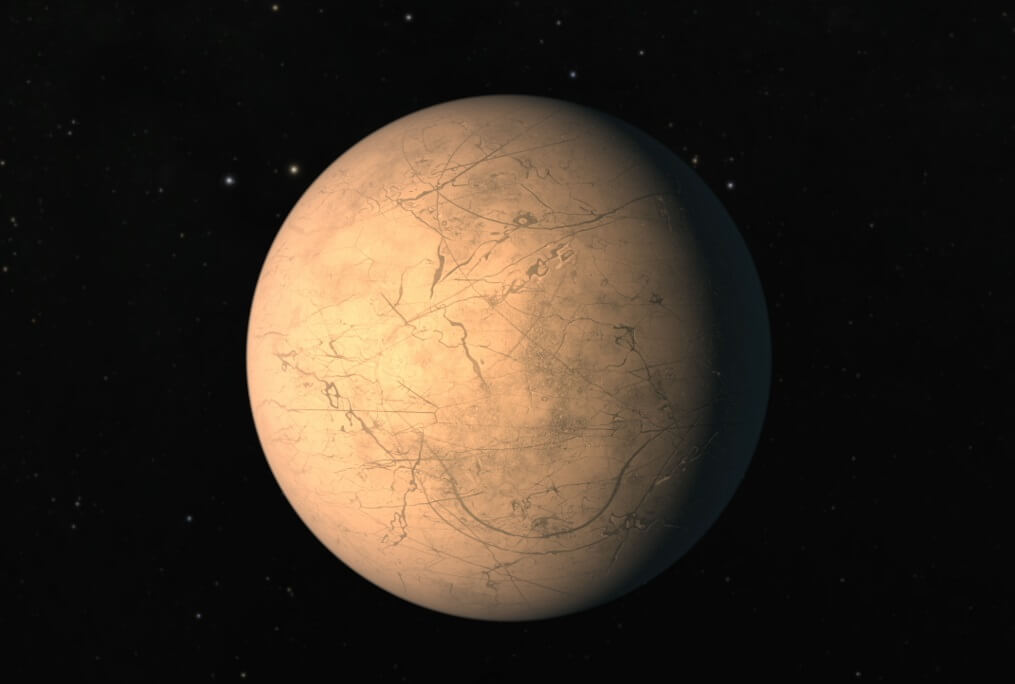
TRAPPIST-1h in the representation of the artist
Planetary system TRAPPIST-1 is now clearly can not complain about lack of attention. Astronomers from around the world flock to his gaze in her direction and trying to find out more about her. At the moment we know that the system has 7 planets. Three planets are in the habitable zone of a star, which in theory could mean that the planets may have water and even life. We also know that the turn of the planet system around ultrahydrogel dwarf, and sitting very close to him. This can be both good and bad news, depending on how you look at it. And now scientists have found yet, and some facts about the farthest planet in the system.
The results of a new study published may 22 in the journal Nature Astronomy reveal some details about the orbit of the planet TRAPPIST-1h. Using data collected by the space telescope “Kepler”, a group of researchers were able to verify the predictability of the rotation frequency of 6 planets in this system. The gravitational force each planet keeps the system stable.
“Take the last planet of this system. When she performs 2 orbital circulation, the planet going in front of her, committing 3 turnovers. Before reaching the penultimate commits during this same time, already 4 turns and, according to the same pattern the rest of the planet doing 6, 9, 15 and 24 rpm,” says astronomer at the University of Toronto at Scarborough Dan Tamayo.
“It’s called a “circuit resonance”. And, perhaps, this is the longest chain of resonances, which we had found in planetary systems”.
Using this information, the scientists were able to figure out the orbital period of the planet TRAPPIST-1h. A complete revolution around the planet makes a star in 19 earth hours. TRAPPIST-1h is about 9.6 million kilometers from its star. Therefore, the researchers say, most likely, it is outside the habitable zone. Thus we can assume that she is unable to support the existence of life. Talking about it and its temperature. According to space Agency NASA, the amount of energy that the planet receives from its star similar to the level that gets the dwarf planet Ceres located in the asteroid belt of the Solar system.
“We found that the radius of the planet TRAPPIST-1 h is about 0,725 R, and the steady-state temperature at its surface is equal to approximately 173 K (-100 degrees Celsius). It is the coldest in the system. We also measured the rotation period of the star. It is 3.3 days. There were a few low power flashes on its surface. In General, the star behaves quite calm for a dwarf class M in the middle of its life cycle”.
Scientists have discovered a few secrets of the most mysterious planets in the system TRAPPIST-1
Nikolai Khizhnyak